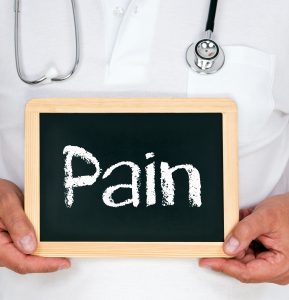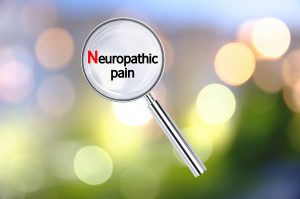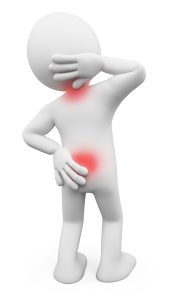Aim: To understand the different pain patterns which occur following brain injury, the impact that pain may have on the person, how to manage pain and the potential impact of pain management on the person’s clinical presentation.

Pain is “an unpleasant sensory and emotional experience associated with actual or potential tissue damage, or described in terms of such damage” (International Association for the Study of Pain). Some pain patterns which occur following brain injury include the following:
- Headache is “pain located above the orbitomeatal line”. (International Headache Classification – ICHD-2).
- Neuropathic pain is defined as “Pain caused by a lesion or disease of the
 somatosensory nervous system”, (IASP):
somatosensory nervous system”, (IASP):
- Typically it is described as burning, stabbing, shooting, aching, tingling or like an electric shock.
- It can be associated with:
- Allodynia – pain precipitation by touch or stimulus that would not normally cause pain.
- Hyperalgesia – pain that is disproportionately severe relative to the triggering stimulus.
- Paraesthesia. Occurence of unpleasant or painful feelings in the absence of stimulus.
- Unlike mechanical or inflammatory pain it is unlikely to be helped by traditional painkillers.
- Mechanical pain is a term used to describe pain associated with abnormal stress on muscles or joints:
- Typically pain only occurs when triggered by movement or posture.
- It is more likely to be helped by traditional analgesics (Paracetamol / NSAID’s) or by physical treatments.
 It is not possible to describe an exhaustive list of pain patterns which may occur following a brain injury. However, patterns which are relatively common include headache, peripheral pain patterns and pain due to general medical conditions.
It is not possible to describe an exhaustive list of pain patterns which may occur following a brain injury. However, patterns which are relatively common include headache, peripheral pain patterns and pain due to general medical conditions.
The person with cognitive and/or communication impairments may have some difficulty in verbally expressing their experience of pain. Therefore, the person may demonstrate irritability, frustration, disengagement and/or social withdrawal instead of describing pain symptoms.
Assessment of Pain
Pain Management Approaches
The Impact of Pain and Analgesic Medication following Acquired Brain Injury